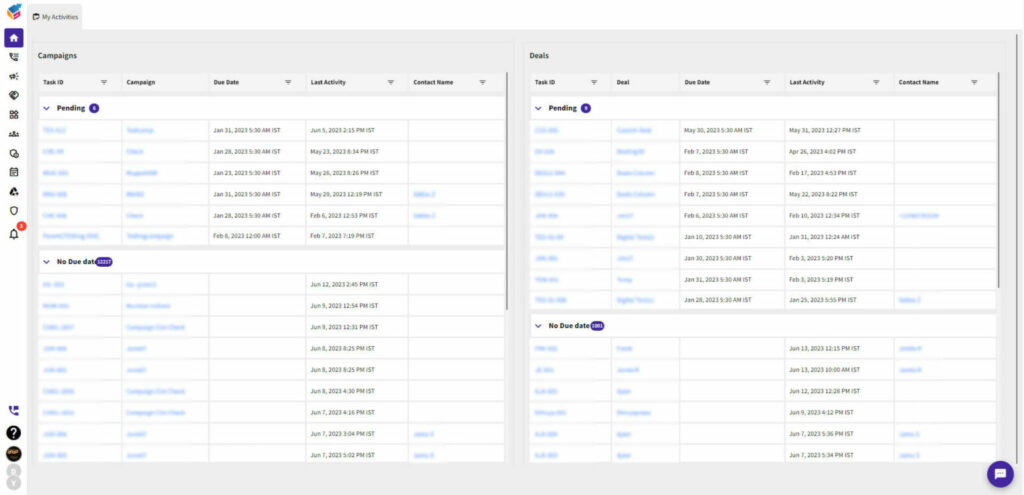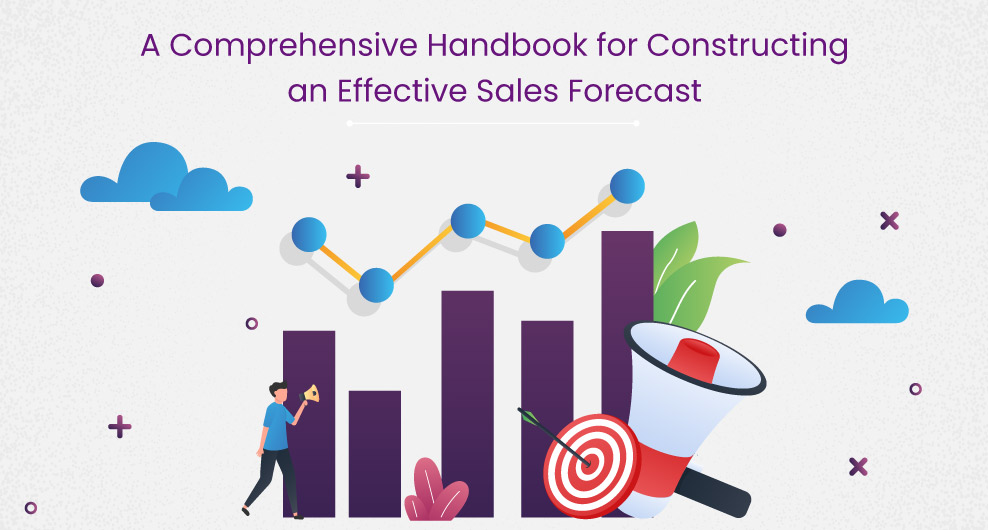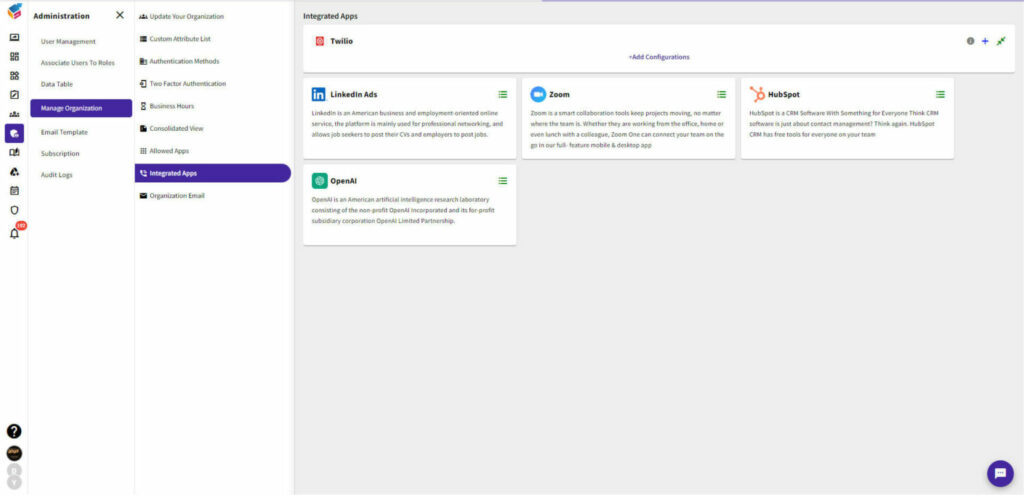Table of Contents
Crafting a sales forecast is a delicate blend of art and science. Precise sales forecasts not only please your executives but also ensure the vitality of your business. This comprehensive guide is designed to provide you with all the essential information on sales forecasting. It will enable you to gain a clear understanding of your company’s projected sales and effectively manage everyone’s expectations.
To create this reference guide, we have compiled the most asked questions about the sales forecasting process from sales teams. Drawing from our internal discussions and over two decades of experience in developing sales solutions, we aim to address your key concerns.
If you are a seasoned sales leader already well-acquainted with the fundamentals of sales forecasts, feel free to skip to the sections on devising a sales forecasting plan and employing tools to enhance sales forecasts. Given the current challenging circumstances surrounding sales forecasting, we recommend exploring the section on navigating sales forecasts during unpredictable times for valuable insights.
What is a sales forecast?
A sales forecast is an estimation of future sales revenue that a company anticipates generating within a specific time. It is a crucial component of the overall business planning process as it helps organizations make informed decisions about resource allocation, production capacity, budgeting, and goal setting.
Sales forecasts typically involve analyzing historical sales data, market trends, customer behavior, and other relevant factors to project future sales performance. The forecast can cover various timeframes, such as monthly, quarterly, or annually, depending on the needs of the business.
The primary purpose of a sales forecast is to provide a reliable prediction of future sales volumes and revenues, enabling businesses to assess their financial health, plan for growth, identify potential challenges, and adjust their strategies accordingly. It serves as a reference point for monitoring actual sales performance and measuring the effectiveness of sales initiatives and marketing campaigns.
Why are sales forecasting important?
Sales forecasting is significant for several reasons:
- Planning and Budgeting: Sales forecasts provide the foundation for strategic planning and budgeting processes. They help businesses set realistic goals and allocate resources effectively, including sales quotas, production capacity, inventory levels, and marketing budgets.
- Resource Allocation: Accurate sales forecasts assist in determining the necessary resources and staffing levels to meet projected sales demand. It allows companies to optimize their operations, avoid overstocking or understocking, and ensure efficient utilization of resources.
- Financial Management: Sales forecasts provide valuable insights into expected revenue streams, allowing businesses to manage their cash flow, make informed financial decisions, and secure necessary funding or investments. It helps in estimating profitability, identifying potential cash flow gaps, and planning for future financial needs.
- Performance Evaluation: Sales forecasts act as benchmarks for evaluating actual sales performance against projected targets. By comparing the forecasted figures with actual results, businesses can assess their sales team’s effectiveness, identify areas for improvement, and take corrective actions to achieve better outcomes.
- Decision Making: Sales forecasts influence critical business decisions such as product development, pricing strategies, market expansion, and resource allocation. They provide data-driven insights that enable informed decision-making and minimize risks associated with uncertain market conditions.
- Stakeholder Communication: Sales forecasts are essential for communicating with stakeholders, including executives, investors, shareholders, and lenders. It demonstrates the company’s growth potential, market viability, and overall financial health, instilling confidence and attracting support.
Who is responsible for sales forecasts?
Sales forecasts typically involve collaboration among various individuals and departments within an organization. The primary responsibility for sales forecasts often lies with the sales team, particularly the sales managers or sales operations team. However, it is important to note that the involvement of other departments is crucial to gather the necessary information and insights for accurate forecasts.
Here are key stakeholders involved in the sales forecasting process:
- Sales Team: Sales representatives, sales managers, and sales operations personnel are directly responsible for providing input based on their market knowledge, customer interactions, and sales pipeline data. They play a significant role in forecasting individual sales targets and contributing to the overall sales forecast.
- Marketing Team: The marketing team provides valuable information on market trends, promotional activities, advertising campaigns, and product launches. They collaborate with the sales team to align marketing strategies with sales forecasts and ensure consistency in messaging and customer targeting.
- Finance Team: The finance department plays a crucial role in analyzing financial data, historical sales performance, and other financial metrics. They provide financial expertise, validate the feasibility of sales forecasts, and incorporate the forecasts into financial planning and budgeting processes.
- Operations and Production Team: The operations team provides insights into production capacity, supply chain management, and inventory levels. Their input helps align sales forecasts with operational capabilities, ensuring that production can meet projected sales demands.
- Executive Management: The executive team, including the CEO, CFO, and other key decision-makers, has a vested interest in accurate sales forecasts. They review and approve the forecasts, use them for strategic planning, and rely on them for making critical business decisions.
How do I design a sales forecasting plan?
Designing a sales forecasting plan involves several key steps. Here’s a framework to guide you through the process:
- Define Your Objectives: Start by clearly identifying the objectives of your sales forecasting plan with CRM software. Determine why you need the forecast, what specific goals you want to achieve, and how the forecast will support decision-making and resource allocation within your organization.
- Determine the Timeframe: Decide on the timeframe for your sales forecast. It can be monthly, quarterly, annually, or a combination depending on the nature of your business, industry, and planning cycles. Ensure the timeframe aligns with your business goals and supports effective decision-making.
- Select Forecasting Methods: Explore various forecasting methods based on the availability of data, historical sales trends, and the nature of your industry. Common methods include qualitative approaches (such as expert opinion and market research) and quantitative approaches (such as time series analysis and regression models). Consider using a combination of methods to improve the accuracy of your forecasts.
- Gather Data: Collect relevant data for your sales forecasting. This includes historical sales data, market trends, customer behavior, industry reports, competitor analysis, and any other internal or external factors that may influence sales performance. Ensure the data is accurate, reliable, and up-to-date.
- Analyze Data and Identify Patterns: Analyze the collected data to identify patterns, trends, and correlations. Look for factors that have historically influenced sales performance, such as seasonality, economic conditions, marketing campaigns, or product launches. This analysis will help you develop meaningful insights for your forecasts.
- Develop Forecasting Models: Based on the selected forecasting methods and data analysis, develop forecasting models that best fit your business needs. Utilize statistical tools, software, or spreadsheet applications to create your models and generate forecasts. Adjust the models as needed to incorporate any unique factors specific to your business.
- Validate and Refine the Forecast: Validate your forecasts by comparing them with actual sales results over a specific period. Assess the accuracy of your forecasts and identify any discrepancies or areas for improvement. Refine your forecasting models and methods based on these findings to enhance future forecast accuracy.
- Monitor and Update: Continuously monitor and update your sales forecasts as new data becomes available, market conditions change, or internal factors evolve. Regularly review and revise your forecasted figures to ensure they remain relevant and aligned with your business objectives.
- Communicate and Use the Forecast: Share the sales forecast with relevant stakeholders within your organization, such as sales teams, executives, finance departments, and operations teams. Communicate the forecasted figures, assumptions, and insights derived from the forecasting process. Use the forecast as a guide for decision-making, resource allocation, goal setting, and performance evaluation.
Sales revenue forecasting tools and CRM systems' role
YoroCRM is a comprehensive Customer Relationship Management (CRM) system that can play a significant role in sales revenue forecasting. Here’s how YoroCRM and other CRM systems can assist in the sales forecasting process:
- Data Collection and Analysis: Sales and marketing automation systems like YoroCRM enable businesses to collect and centralize vast amounts of customer and sales data. This includes information on leads, opportunities, customer interactions, and historical sales performance. By analyzing this data, businesses can identify trends, patterns, and customer behavior, providing valuable insights for accurate sales forecasting.

- Sales Pipeline Management: CRM systems facilitate effective sales pipeline management, allowing sales teams to track and monitor the progress of deals and opportunities. By having a clear view of the sales pipeline, businesses can estimate the likelihood of closing deals and accurately forecast future sales revenues.

- Forecasting and Reporting: YoroCRM and other CRM systems often include forecasting and reporting features. These tools enable businesses to generate sales forecasts based on historical data, current pipeline status, and other relevant factors. By utilizing these features, sales managers can create accurate and timely forecasts to guide decision-making and goal setting.

- Collaboration and Communication: CRM systems promote collaboration and communication among sales teams and other departments. By providing a centralized platform for sharing information and updates, teams can collaborate on sales forecasts, align their efforts, and ensure everyone has access to the most up-to-date data for forecasting purposes.

- Integration with External Tools: Many CRM automation systems, including YoroCRM, offer integration capabilities with external tools and applications. This allows businesses to incorporate additional forecasting tools, financial models, or data analysis software into their CRM system, enhancing the accuracy and sophistication of their sales revenue forecasts.

- Forecast Accuracy Evaluation: CRM systems enable businesses to compare their forecasted sales figures with actual sales results. This evaluation helps identify discrepancies, measure forecast accuracy, and refine future forecasts. It allows businesses to continuously improve their forecasting processes and make necessary adjustments based on real-time performance data.

Marketing automation system like YoroCRM play a crucial role in sales revenue forecasting by providing data collection and analysis capabilities, facilitating sales pipeline management, offering forecasting and reporting tools, promoting collaboration and communication, integrating with external tools, and supporting forecast accuracy evaluation.
These features contribute to more accurate, informed, and data-driven sales revenue forecasts.



